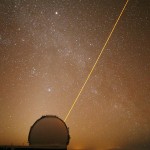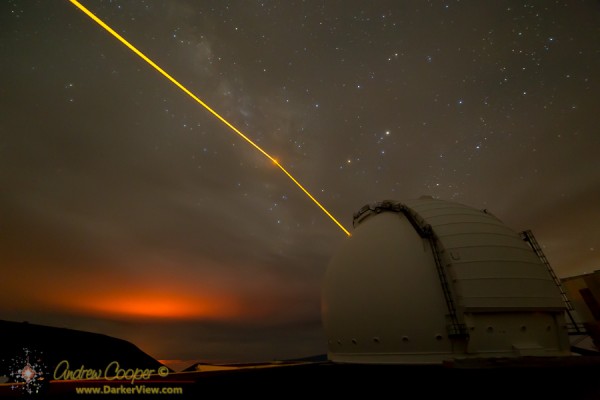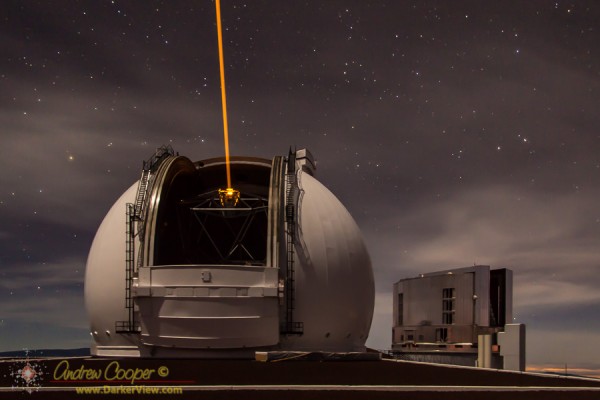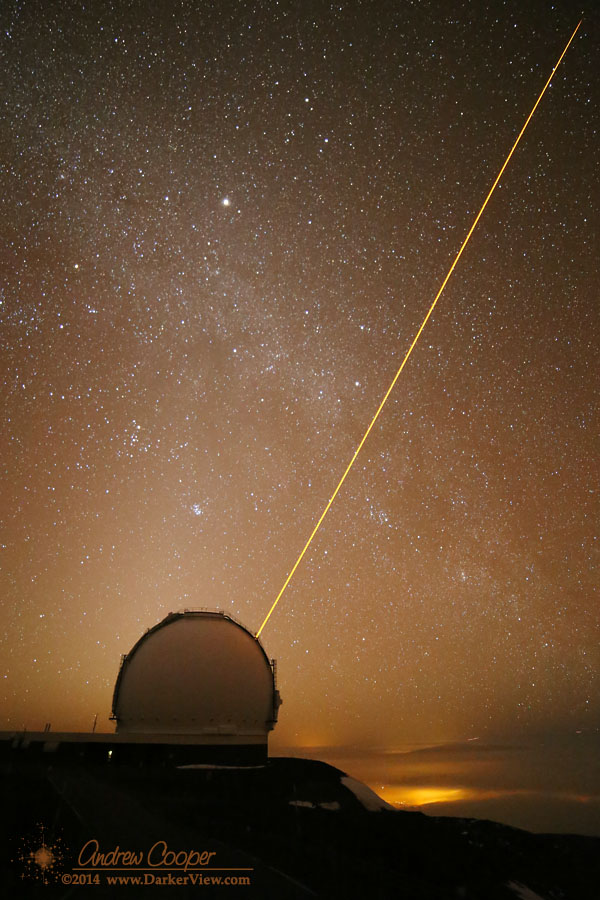
Tag: laser
The New Keck 2 Laser
New Laser Marks Ground Zero for Adaptive Optics Science
W. M. Keck Observatory press release…
Hawaii’s W. M. Keck Observatory has successfully deployed a $4 million laser system that provides a marked increase in the resolution and clarity of what are already the most scientifically productive telescopes on Earth. The new laser was projected on the sky for the first time on the evening of December 1, 2015 and will allow scientists from around the world to observe the heavens above Maunakea in unprecedented detail.

The first Laser Guide Star Adaptive Optics system on a large telescope was commissioned on the Keck II telescope in 2004 and, among many other firsts, helped reveal the black hole at the center of the Milky Way – one the most significant astronomical discoveries. The second laser system was installed in 2011 on the Keck I telescope, propelling Keck Observatory’s lead as the premiere Adaptive Optics research facility in the world. To date more than 240 science results from these laser systems have been published in astronomical journals.
Continue reading “New Laser Marks Ground Zero for Adaptive Optics Science”
Two Lasers on the Galactic Center
Keck 1 AO Laser
Laser Optics
Four Lasers on the Galactic Center
Another great video from my friend Dan Birchall. There are more opportunities to see multiple lasers on the galactic center in coming months. I hope to get up and do some more shooting of my own.
Testing TBAD
TBAD is our Transponder Based Aircraft Detector, used to avoid illuminating an aircraft with the AO laser. A specially designed receiver that uses an antenna at the front of each telescope to detect the TCAS anti-collision transponder that is carried by all commercial and most civil aircraft.

Still, we are mandated to avoid the situation and to put in place measures to avoid such an occurrence. Before TBAD this involved hiring guys to sit outside and watch the skies for aircraft. I have done this, it can be pretty on a clear night with calm weather. It can be brutal on a cold and windy night. Even when taking precautions such as rotating two spotters every hour or two there is always the question of human fallibility under adverse conditions. Using an automated system like TBAD is far preferable.
Keck 2 Lasing
Four Lasers Aim for the Galactic Center
I am truly jealous! My friend Dan Birchall got the photo I had hoped to get… All four Mauna Kea lasers in operation at the same moment. Better yet, all four lasers were on the same target, the center of our Milky Way galaxy. The result is a great photo of four yellew beams converging to the same spot in the sky.

The four beams come from our two Keck telescopes, plus one from Gemini and one from Subaru. the lasers are used to create reference beacons for the adaptive optics systems used on these large telescopes. I will, with a little possessive pride, point out that the Keck lasers are much more powerful than the others.
The scheduling of all four lasers at once is a rare occurrence. All four lasers on the same target? Even more luck was involved! It helps that Dan is a telescope operator and spends far more dark time on the summit than most of us. He took advantage of the situation correctly… Grabbing the camera and shooting.
Below is more footage from Dan, a little time lapse of the telescopes working…





